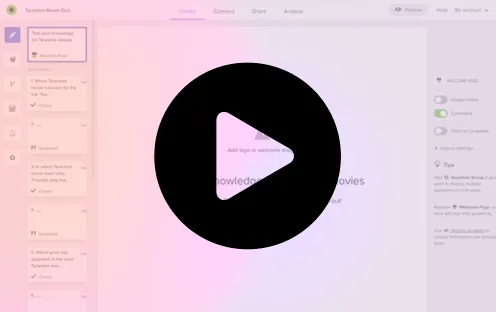
Net Promoter Score (NPS) is a widely-used metric that helps businesses measure customer loyalty and satisfaction. Implementing NPS surveys can provide valuable insights into your customers’ perceptions of your products or services. In this step-by-step guide, we’ll walk you through the process of setting up and conducting Net Promoter Score surveys to enhance your understanding of customer satisfaction and loyalty.
How to Implement NPS Survey
Step 1: Define Your Objectives Before diving into NPS implementation, clearly define your objectives. Understand what specific insights you hope to gain from the surveys and how you plan to use the data to improve your business. Establishing a clear purpose will guide the entire survey implementation process.
Step 2: Choose the Right Timing is crucial when it comes to NPS surveys. Determine the appropriate moments in the customer journey to collect feedback. Common touchpoints include after a purchase, customer support interaction, or product usage. Ensure that the timing aligns with the customer’s experience to gather accurate and relevant feedback.
Step 3: Craft a Clear and Concise Survey Design a simple and straightforward survey that consists of a single question: “How likely are you to recommend our product/service to a friend or colleague?” Respondents then rate their likelihood on a scale of 0 to 10. Additionally, leave room for optional comments to gather qualitative insights.
Step 4: Calculate NPS Score Categorize respondents into three groups based on their ratings:
- Promoters (score 9-10): These are loyal customers who are likely to recommend your business.
- Passives (score 7-8): These customers are satisfied but not enthusiastic. They may be prone to switch to competitors.
- Detractors (score 0-6): Unhappy customers who are unlikely to recommend your business.
To calculate your NPS score, subtract the percentage of detractors from the percentage of promoters. The resulting score can range from -100 to +100.
Step 5: Analyze and Act on Feedback Review the qualitative comments and identify patterns or recurring themes. Use this feedback to understand the reasons behind the scores and pinpoint areas for improvement. Implement changes based on these insights to enhance customer satisfaction and loyalty.
Step 6: Monitor Trends Over Time Consistently conduct NPS surveys at regular intervals to track changes in customer sentiment over time. Monitoring trends will help you assess the effectiveness of your improvements and identify any emerging issues promptly.
Step 7: Communicate Results and Take Action Share NPS results with key stakeholders within your organization. Communicate successes and areas for improvement, fostering a customer-centric culture. Develop action plans to address specific issues raised by customers and showcase your commitment to their satisfaction.
The Importance of Time and Frequency
When delving into the realm of NPS surveys, understanding the intricacies of survey timing and frequency is paramount for meaningful insights. Striking the right balance between the frequency of surveys and the timing of their deployment is crucial for obtaining accurate and valuable feedback.
- NPS® surveys, designed to measure customer loyalty and satisfaction, benefit from being conducted regularly. Tracking changes in the NPS® score and customer satisfaction levels over time provides a dynamic understanding of your business’s performance. However, a delicate equilibrium must be maintained, as sending surveys too frequently can lead to customer irritation and potentially skewed results. It is recommended to space out surveys at an interval of 2-4 months, ensuring a balance between consistency and avoiding survey fatigue.
- When initiating surveys with new customers, exercising patience is key. Rushing to gauge customer loyalty too early may yield unreliable results. It is advisable to wait until customers have had substantial interactions and experiences with the company before soliciting their feedback. This patient approach ensures that survey responses are reflective of a more informed and comprehensive customer perspective.
- Transactional NPS surveys add another layer of complexity, emphasizing the significance of timing and context. Deploying surveys at pivotal moments, such as after a customer has made a purchase or following a major campaign, enhances the relevance of the feedback collected. Understanding the context in which the survey is administered contributes to the accuracy and applicability of the data obtained.
Implementing NPS surveys is a valuable strategy for understanding and improving customer satisfaction. By following this step-by-step guide, you can effectively gather and analyze feedback, identify opportunities for enhancement, and ultimately build a more loyal customer base. Regularly incorporating NPS surveys into your business strategy will help you stay responsive to customer needs and maintain a competitive edge in today’s market.







